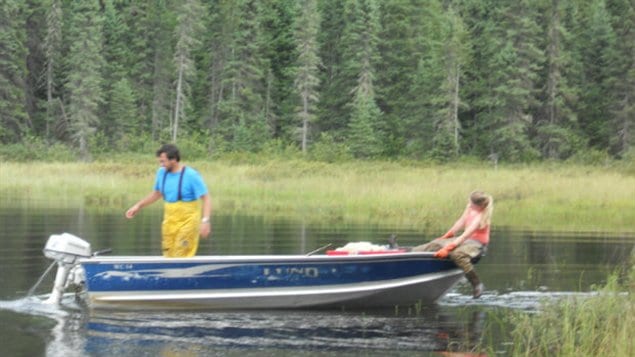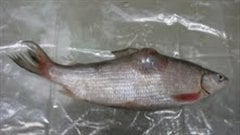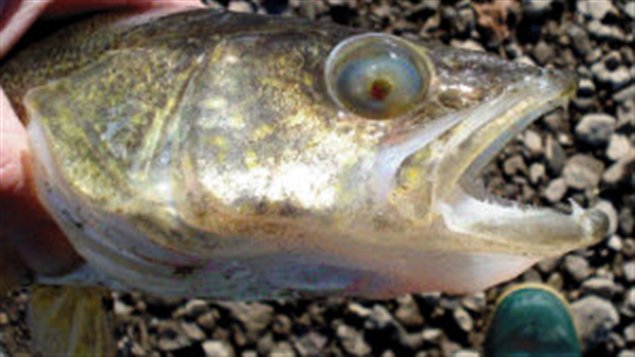A Walleye with an enlarged eye caught near Ft. McKay, Alberta, on the Athabasca River in 2010.
Renowned Canadian scientist David Schindler says there are stunning similarities between deformities in fish near oilsand developments in Canada and those near major oil spills like the Exxon Valdez in Alaska and Deepwater Horizon accident in the Gulf of Mexico. He has photos of fish from the Athabasca region in western Canada with two tails, bulging eyes and huge tumours.
The same kinds of deformities were reported in a study Schindler received last week from the Gulf of Mexico. The variety of abnormalities leads him to believe they are caused by disruptions of the fish’s immune systems.
Research is needed to ferret out exactly which compounds are responsible for the deformities, says Schindler. If particular groups of chemicals were identified, engineers could work on ways to eliminate them from the process of extracting bitumen from the oilsands. This is the same kind of research that led to the understanding that dioxins were highly toxic and their subsequent elimination from pulp and paper processing. Fish stocks made a remarkable recovery afterward.
Special research needed, says scientist
This new research on the effects of oilsand effluent should be done in a closed environment where chemical compounds could be tested one at a time, according to Schindler. “I think the only way that can be done is to take the whole system outside of the oilsands. One can’t isolate individual pollutants when all of them are going in a chemical soup which is the approach being taken in monitoring right now.”

The Experimental Lakes Area (ELA) would have been the place to do this kind of test. It is a remote area that includes 58 separate lakes which has been a venue for ecosystem experiments. Research conducted there was instrumental in helping Canada and the United States come to an agreement on curbing acid rain in 1991. The problem is the government plans to close or sell the ELA in September.
Schindler has sent open letters to two ministers of government asking them to take action on the issue of fish deformities near oilsand developments.

The government department, Environment Canada has e-mailed the public broadcaster, CBC, insisting that it is taking its responsibilities around the oilsands seriously. “Our government launched a comprehensive oil sands monitoring plan that enhances the monitoring of water, air, land and biodiversity,” wrote spokesperson Rob Taylor.
“On the Experimental Lakes Area, the government continues to actively work towards establishing a new operator for the ELA site so that research there can continue,” wrote a spokesperson for the Department of Fisheries and Oceans (DFO).
Schindler told CBC he was glad to hear that.
“Frankly, I would like to see the Experimental Lakes Area funded independently of DFO. It’s always been a Cinderella project and for 30 years DFO has been a very bad stepmother.”
David Schindler, professor of ecology at the University of Alberta spoke with RCI’s Lynn Desjardins.
Listen






For reasons beyond our control, and for an undetermined period of time, our comment section is now closed. However, our social networks remain open to your contributions.